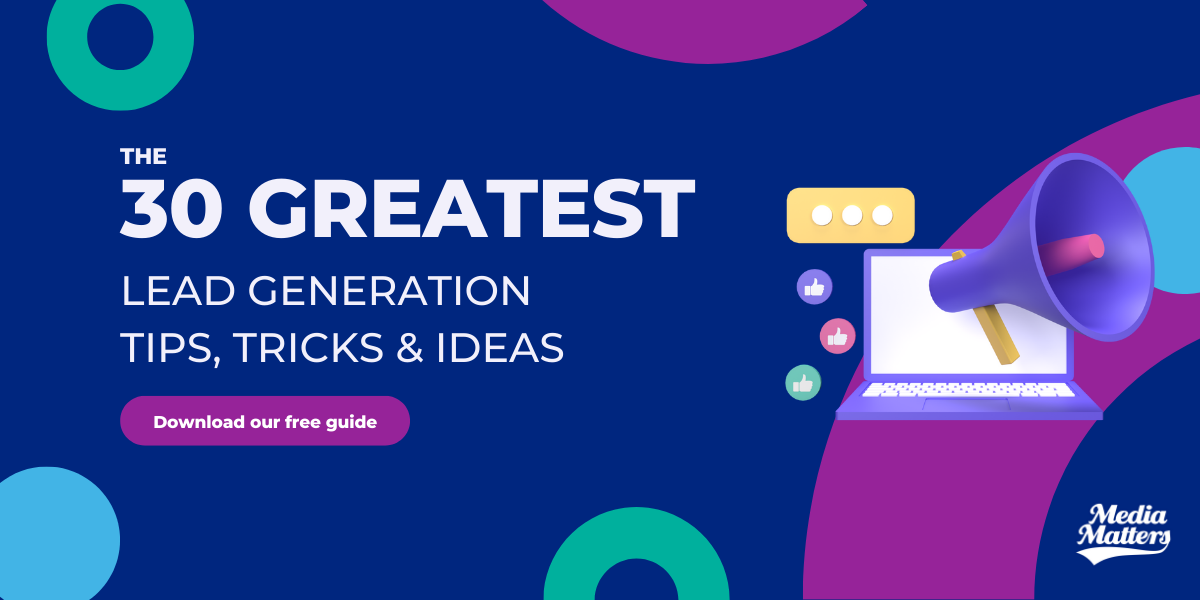If you’re an entrepreneur having to juggle your business and marketing activities or even if you’re a digital marketer working on various client accounts, it goes without saying that you’ve heard about, read about and have come to understand the importance of content marketing.
If you’re still in denial and think you can scrape by without investing in a solid content marketing plan, I have some news for you – it’s time to board the content train!
What is a content marketing strategy?
A Content marketing strategy refers to the blueprint used to attract, engage and retain your target audience by publishing different types of content to achieve your business goals and meet your user at each stage of the buyer’s journey.
So, how exactly does content fit into the buyer’s journey and how does this relate to your bottom line?
Let’s look at the buyer’s funnel.
Top of funnel
Awareness
At the top of your marketing funnel, your goal would be to create brand awareness and increase your online visibility. The goal here would be to create a content strategy that attracts new users to your website.
If you’re a new business, you won’t attract branded searches because nobody has heard of you before. Instead, you need to find a way to attract your target audience by using non-branded and long-tail keywords.

Content at this stage of the funnel, usually takes the form of blog posts and how-to guides, answering questions that users have about a broader topic related to your niche.
For example – if you’ve launched a web development company, top-of-the-funnel content topics would cover “How to create a website” or “What do you need when creating a website”.
Someone in the research phase could come across your blog article and brand for the first time. If the content is valuable, you would have made an impression on them and your chances of them returning to find out more are higher.

Middle of the Funnel
Consideration
When your users are in the middle of the funnel, it means that you have positioned your brand in such a way that they are now considering engaging with your business.
Prospects at this stage are contemplating various solutions to their problem and at this stage might be considering your product or service as a fit.
Appropriate content to keep a user engaged at this stage could be case studies, showcasing success or downloadable assets or templates that they can use for free.
It’s important at this stage to engage a prospect enough by obtaining their email address or contact information. This is usually done in an exchange for something like a downloadable asset or encouraging them to sign up to receive a special offer.
For example – if you’re looking for a web design company, you might find a case study from an agency, that showcases work they completed for a similar client. If you’re impressed with the information, good content would encourage you to sign up or enquire for more information.
Bottom of the funnel
Conversion
Appropriately named, bottom-of-the-funnel content drives your business’s bottom line. Users who are at this stage are very close to purchasing from your brand.
When a user has made it this far in the funnel, it’s important that the content they consume convinces them to convert and become your client or customer.

Content at this includes product features and comparisons, special offers, free trials and demos and even client reviews. Basically, any kind of content that proves you are the best product on eh market. People are more likely to trust a brand when they can see how it has solved somebody else’s problem too.
Why do you need a content strategy for your business?
Simply put – Content marketing costs 62% less than traditional, outbound marketing, and generates three times as many leads. Do you need any more convincing?
Content strategy is important because it helps you create, distribute and measure the success of content during your buyer’s journey and the different marketing touchpoints.
Up until now, a few businesses might have gotten by without a solid content strategy, but with globalisation and the increase in competition – there are literally no more boundaries when it comes to competing in the market.
Previously, business owners only had to worry about competitors within a physical distance, but now competitors are able to take up a large share of the market by targeting and attracting potential customers in different regions, thanks to the online era.
Some benefits of content marketing strategy
- Creates trust
You won’t trust a random person in the street that you’ve never heard of before right? So why would you expect an audience to trust you if they have never seen your brand or engaged with you?
A content strategy is a way to connect and communicate with your potential audience. Creating content will help you build a relationship by answering their questions and giving them valuable insights about your services and products. By offering them something of value, without taking anything from them, they’re more likely to trust your recommendations and ultimately the products or services you want to sell.
Quality content will build your brand’s reputation.
- Build loyalty
Content can be evergreen and can keep an audience coming back for more. If users have a positive experience with your brand and content, they will always come back for more.
Once users are loyal to you, they will recommend your brand to friends and family, and what could possibly be better than word-of-mouth marketing?
- Showcase Authority
When people are researching information about a product or service they want to be sure that the business they are supporting knows what they are doing.
Through a solid content strategy, you can showcase your expertise and authority in the industry. If your business builds credibility, you’ll be able to convert people more easily.
- Increase quality leads
When you have a solid content marketing plan, that keeps your brand top-of-mind of your various audiences, people are more likely to buy from you again. The easiest sale is a repeat sale.
Using content, you’re able to guide your user’s thoughts and actions on your landing pages, encouraging them to click through to sales pages in your content. This is why quality and relevant content are important. The more useful or entertaining they find your content, the more likely they will be to click through and generate leads.
Business objectives over marketing objectives every single time
Content marketing can take up a lot of your marketing resources to execute, so it is important that the objectives of a content strategy align with business objectives.
Sometimes marketing objectives can be difficult to define or measure on its own, but keeping in mind that the ultimate goal is to drive commercial value from your campaigns, it becomes easier to measure ROI. Marketing and sales can’t operate in little silos, their goals always have to be aligned.
Together, marketing and sales should answer the following:
Who is your Audience / who will be reading your content?
Before even thinking about your content strategy, you have to think about your audience. It is important to define who your audience is.
Remember that there isn’t only one type of person that will buy from you or use your services, so you shouldn’t only create one kind of content.
Creating content with each user persona in mind will help you empathise with your user and better understand them – giving them an experience with your brand that will make them want to come back.
Each persona will have different channels where they are most likely to consume their preferred content, be it Twitter, TikTok or Instagram. So be sure that your content is tailored for each persona.
What is the objective of your product? What problem are you solving?
Often, the best products that offer solutions aren’t the most successful, because their marketing and content strategies fail.
You need to sell to your audience by connecting and engaging with them on a personal level.
People want to feel heard and they want to know that they aren’t alone in whatever problem they are facing. A solid, well-thought-out strategy that is human-centric will help support an audience that is still figuring out what their main challenges are, and also those who are already using your product to overcome these challenges.
By taking the time to understand this, you can be a brand that presents itself as empathetic, quickly gaining popularity, and increasing your bottom line.
Is your business unique?
It’s very likely that no matter what product or service you’re selling, there are hundreds of people offering the same so it’s important that you let your target audience know what it is that makes you different and why they should buy from you.
If you have a certain level of expertise or only use specific quality products, incorporate this into your unique selling points to help elevate your brand above the rest. You need to stand out to be noticed, so focus on what makes you special.
Where does your audience spend their time?
No, we don’t mean where they hang out after work – rather, where they consume the most online content – that’s where you need to be.
Instead of expecting your audience to find you, you need to find them first. Meet them where they are and you’ll raise your brand awareness and visibility.
Don’t just create various content formats because of what is popular or trending at the moment. While one business might find an engaged audience on TikTok, another might find its audience on Youtube. Test various formats and find what works best, otherwise, you will waste time shooting in the dark and see no ROI.
How can you align your content and business objectives?
A content strategy is not about setting and forgetting. Your strategy always needs to be evolving, just like your audience evolves and that is why collecting data is important.
There is a reason why data is thought to be the most expensive currency – the right kind of data can result in a lot of money.
When resources are spent creating content strategies, you need to be able to measure the success and ROI of your campaigns.
It is important that the correct tracking is set up using platforms like Google Analytics, which gives you invaluable insights into your audience and how they engage with your content.
Analytics platforms can tell you what is working when you interpret user behaviour metrics, understand your audience and empower you to make even better decisions when revising your strategy.
A valuable and sometimes overlooked tool is having a CRM tool in your business to help align business objectives and maximise ROI.
A good CRM can hold all kinds of data, helping different teams within your organisation work together. When departments don’t work together, it creates a pain point for customers because they’re forced to repeat themselves, or important information or tasks slip through the cracks, which can cause you to lose customers.
A CRM helps align business processes between sales, customer service, marketing and more. With a common data model, all employees can access, can use, and add data to work collaboratively and share insights, leads, issues, and purchase history of their ideal customers.
When information is shared across teams, productivity and efficiency can skyrocket. Silos disappear and you can make data-driven decisions that help your entire company appear as one cohesive unit.
Establish and lock in your brand
Every touch point should be on brand
Like every relationship, the relationship with your audience should be built on consistency. You want your audience to recognise your branding immediately while they’re scrolling through their daily Facebook feed. The only way this happens is with consistency in branding and key messaging at every customer touchpoint.
It takes an average of 8 touches in the customer’s journey before a sale is made. As a brand you want to make sure that every touchpoint is on brand, establishing your credibility, building trust and strengthening your reputation.
Let’s take a look at how to bring content to your audience at the different touchpoints.
Content ideation and formats
Coming up with ideas for content and various formats can become tricky, but here are some proven ways to help you produce the most valuable ideas to serve your audience.
- Keyword research
Find out what people want to know, and then give them the answer. It’s as simple as that.
There are many useful keyword research tools like Google Ads Planner, Ahrefs or Ask The Public that helps you discover what people are searching for on the internet.
Using these kinds of tools you can discover search volumes of various phrases and find great opportunities for content creation. You might find that a lot of people are searching “How to create an eCommerce store” – if your business develops websites or does digital marketing, by creating valuable content, this would be an opportunity to educate an audience as well as position your brand as the authority on the topic.
- Keyword intent
Not all keywords matter. There I said it.
Some are more important than others. When doing keyword research, it’s important to understand the intent behind a keyword before creating content based on it.
Various keywords are meant to target people at different stages of the buyer’s funnel. If someone is searching “Web designers in London”, they don’t want to be served content about how to choose a web designer, because they are already in the decision phase of the funnel.
So always bring your focus back to user intent and match it to the relevant stage of the funnel before creating your content.
- User research
Do you have an ideal client in mind? Find them, and other similar profiles online and take a look at what they are saying.
The best user research comes from actual users. Once you have created your user persona and have an understanding of who your ideal audience is, you can find them on networks like LinkedIn and look at the types of content they find relevant and what they engage with. Use these insights to ensure that your content is appealing and speaks to their needs.
- Find online forums
Find relevant forums where people are looking for advice such as Reddit or Quora. With 48 million and over 300 million users respectively, you’re sure to find your target audience here. These are data gold mines when trying to find ideas for content. People are literally telling you what they want and need and this gives your business an opportunity to give it to them.
Types of content marketing
Take a look at the most popular content formats that you might want to consider for your customers. Remember that there is no one-size fits all solution, always go back to the data to understand what is working for your business.
- Blog posts
Blogging is important for not only your marketing but also for your SEO efforts. Having high-quality, valuable content is important to help grow your website organically. There is a reason why 90% of businesses use blogging to market their brands.
An added benefit of blogs – you can repurpose content! One well-written blog post can give you tons of golden nuggets of information that you can use to share across various channels.
There is no recommended word count for blog posts, some topics can be covered in 1000 words, while other posts might need 3000 words to get the point across. As long as every post is written for the right user intent, your post will be a valuable asset.
- Website pages
Don’t forget the importance of your website content. You need to ensure that your key messaging is consistent across your website and that the content tells the story of your brand in a way that is relatable and appealing to your audience.
Every page on your website should be created with intent and provide your user with a good experience, increasing the probability that they will return to your website.
- Digital PR
Digital PR is used to increase a company’s online visibility. By getting exposure on external websites for your brand, you will help build your company’s reputation and brand awareness.
Backlinks generated from digital PR and new brand mentions are always a great way to build your website’s domain authority and increase your credibility.
- Downloadable Assets (guides, ebooks, templates etc)
People love free stuff. They also love brands that give them free stuff. Providing your audience with free ebooks and downloadable guides is a great way to give them value without expecting anything in return, creating a positive interaction with your potential customers.
If you are able to help them solve a problem by providing a free template, they’re more likely to return to your website in future and make a purchase.
- Case studies
By using case studies, you’re sharing a story a customer can relate to while also showcasing the usefulness of your product or service.
Through a case study, you can present a customer that might have experienced a pain point that you have helped solve, there is no better testimony.
People are more likely to trust and try a brand when they’re able to relate to stories that are similar to theirs.
- Social media
Regularly posting on social media is crucial if you want to amplify your brand’s reach.
The average daily usage of social media is 2 hours and 29 minutes, so you want to be sure to take up a percentage of that time in your user’s day.
This doesn’t mean that you should post to social media just for the sake of it. Find out which platforms your audience engages with and adjust your content to that platform to capture your audience.
- Videos
When done right, videos offer a high ROI and can be an engaging medium. Videos can be shared on your website and adapted to be shared across various platforms, offering your audience value over and over. It is also a way to authentically connect with people, showing them who is behind the brand, making it a valuable medium worth investing in.
- Podcasts
Podcast usage has almost doubled over the past 10 years and it is a platform that is still growing. While not for everyone, podcasts give you an opportunity to educate and build a personal connection with your audience through personal branding. It can help you build brand authority and ultimately generate better leads. Podcasts allow you to follow your users – they can access information while on the way to work, dropping the kids of at school and even while they’re on a flight. Now that is one way to stay top of mind of your audience.
Regardless of how many unopened promotional emails you might have – email is not dead.
40% of B2B marketers say that email newsletters are most critical to their content marketing success. Do you know why? Because a whopping 73% of millennials prefer to be contacted via email.
Once a user has given you their email address to contact them, you’re able to send them valuable information and promotional offers, with a high chance that they’ll convert.
A strategic email marketing strategy can improve your lead generation and sales tremendously.
Squeeze the most value out of everything, always
Distribution is more important than creation. We said it.
If you’re creating content after content and not distributing it correctly, your efforts will be futile. If you’re smart about it, a blog can become endless tweets, it can become a short video for social, and it can form the basis of an online webinar or panel discussion. But distribution to all the right channels is important – people won’t find it if you don’t put it in the right place.
If our content marketing strategy intrigued you, you’ll love our post about Content that Generates leads to set your business up for more leads and more sales. Contact Media Matters if you want to discuss a content plan for your business.






